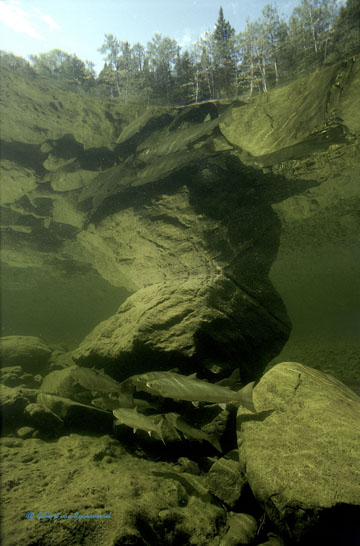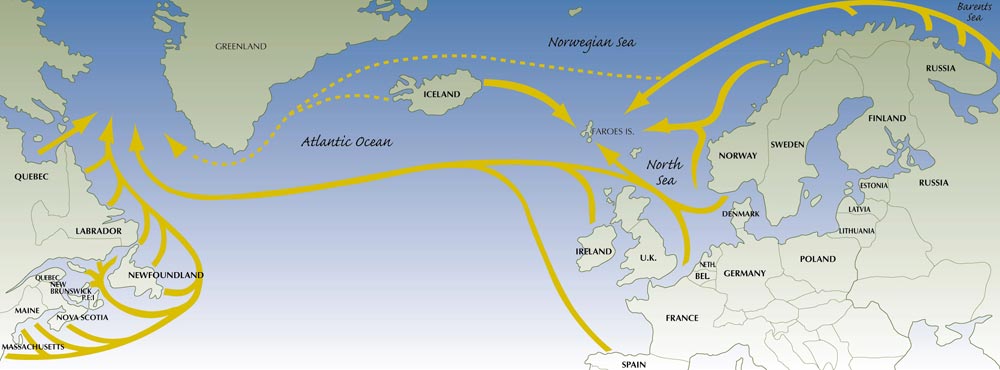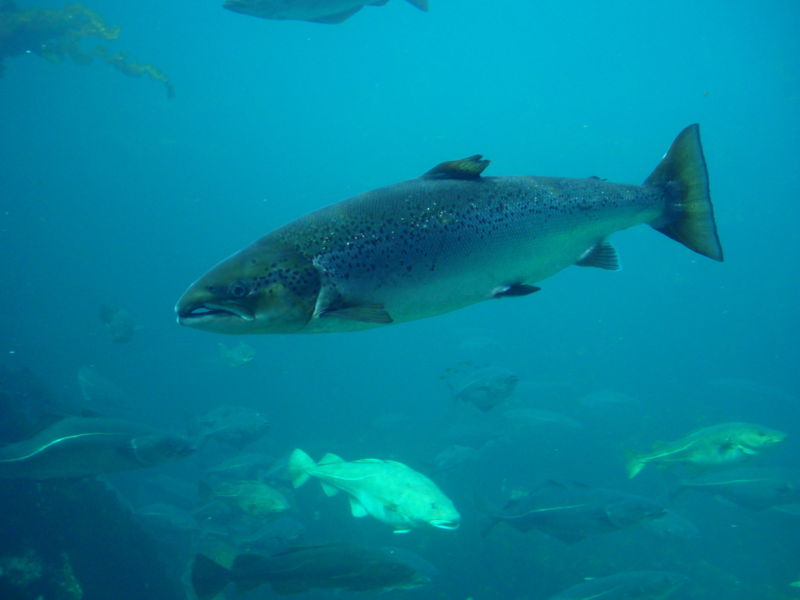From pristine rivers to the deep blue sea...

Atlantic
Salmon alternate habitats. This has to do with the salmon's
unique
life cycle.
Depending on the location of the river that the salmon is born
in, it may spend between one and four years there before it
migrates to the ocean.
It will stay in the ocean and feed until it is time
to reproduce.
Atlantic Salmon are generally found in rivers and tributaries
that lead into the Atlantic Ocean...go figure ;) The Atlantic Ocean is where Atlantic
Salmon spend majority of their time feeding and growing.
The ocean has a much better supply of nutritious food than many
of the rivers. When the
salmon migrate back to the rivers to reproduce, they do not eat
at all.
Rivers need to have very gravelly bottoms to support young
salmon. The rivers are the nesting and birthing grounds for
Atlantic Salmon. A gravelly bottom provides a place for
the female salmon to dig her nest, or redd, and is a safe place
for the young salmon to hide and feed during the critical stages
of life.
Image Provided by Gilbert van Ryckevorsel
Water temperatures between 4˚ and 12˚C
are preferred by the salmon. The lethal limit for a salmon
habitat is -.7˚C on the low end and 27.8˚C on the high end.

The map above shows the different traveling routes of Atlantic Salmon. Salmon swim as far north as Ungava Bay in northern Quebec and as far south at the Connecticut River. In the past, high numbers of salmon were found in rivers that empty into Lake Ontario. On the eastern side on the Atlantic Ocean, salmon swim as far northeast as the Pechora River near the Ural Mountains of Europe and as far south as the border between Portugal and Spain (Atlantic Salmon Federation).
Photo by Hans-Petter Fjeld
Most Atlantic Salmon adaptations pertain to their habitat and
means of feeding. The sleek design of a salmon allows it
to quickly escape predators and also be an efficient predator
itself. The lateral line (visible where the color of the fish
changes from dark, towards the dorsal fin, to light ,towards the
pelvic fin) of a salmon serves one important purpose. It
a major sensory tool. The lateral lines allows
the salmon to detect movement of other fish and water currents.
Being able to detect water currents is very important for the
salmon because it needs to be able to tell which way is up
stream and which way is down stream to migrate the correct
direction.
The other highly notable adaptation in salmon is their gills.
Atlantic Salmon have four sets of gills with specialized cells
that allow them to migrate between salt and fresh water.
The four sets also allow for efficient dissolving of oxygen.
Let's find out what types of FOOD are available for Salmo salar in these habitats!
Questions?
Comments? Contact me at
webb.laur@students.uwlax.edu
Site Designed by Lauren Webb - Last Updated: 4.15.09
University of Wisconsin - La
Crosse
For
more interesting organisms visit
multiplerganisms.net
Back
to HOME

